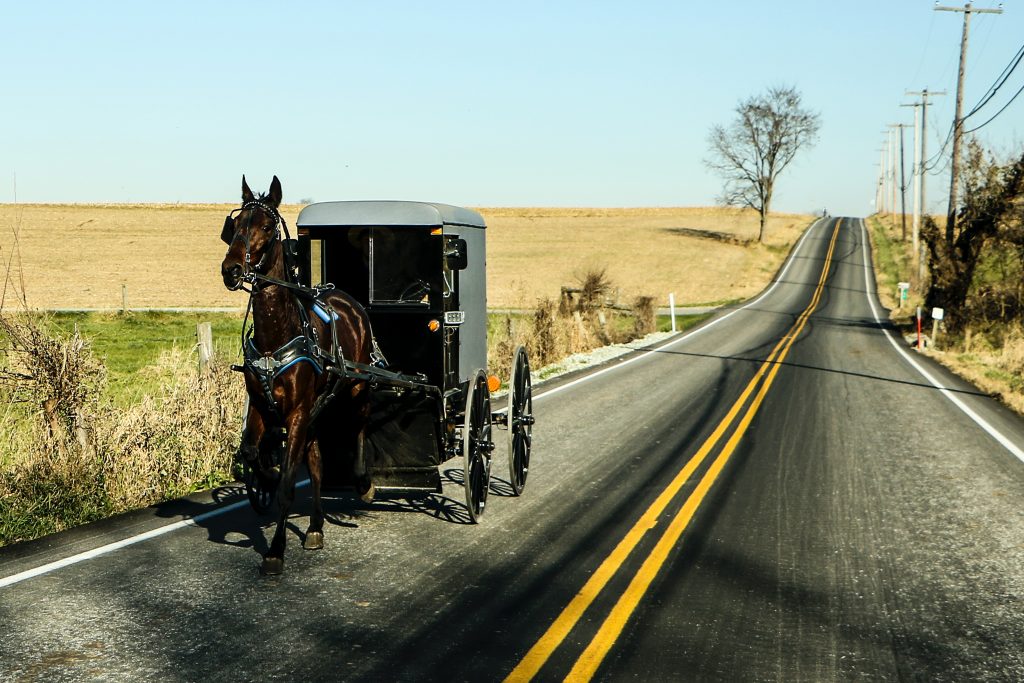In this article Amish fiction author Cindy Woodsmall talks about Amish fiction, facts about the Amish community, and more. If you’ve read her recently release Yesterday’s Gone which she co-authored with Erin Woodsmall, read this post to discover even more about the Amish traditions and customs she writes about in her novels.
The other day, I saw someone on Twitter say, “Wait, Amish fiction is a real thing?” And it occurred to me that there are still a lot of people who haven’t read this genre.
Many of you reading this are quite familiar with stories about the Amish—it’s been one of the most popular genres of inspirational fiction for over fifteen years. Sometimes people ask me why. Why write it? Why do readers enjoy it?
I believe there are relatable universal truths that Amish fiction explores in ways other genres struggle to. Let’s talk about some core Amish beliefs and how they translate into good stories.
“’Tis the gift to be simple, ’tis the gift to be free . . .
Simple Gifts, a Shaker song from 1848
For centuries it’s been a core belief of the Amish that living simple is vitally important, and simple is also known as living Plain. What does it mean to live Plain? The Plain People have their roots in the Protestant Reformation that swept through Europe in the 1500s. Now members of the Protestant group known as Amish are particularly prevalent in the United States.
Today, there are many sects of Amish, just as there are many denominations among Protestant Christians. There are also Plain Mennonite, Dunkers, and Quakers that fall under living Plain. Those who are considered Plain wear clothing that we can easily recognize as “Amish or Mennonite,” but that’s often where the similarities end.
Amish life and the sacrifices people make to live that lifestyle create a great backdrop for exploring the push and pull, the love-hate relationship we have with modern-day life. That fascinating backdrop and my friendships with Plain folk starting from childhood are my inspirations for writing novels about the Amish.
Since we can’t cover all the sects of Amish in this article, we’ll focus on the ways of Old Order Amish. That’s where most of my research, personal connections, and novels are centered.

Old Ways and the Ordnung: The Old Order Amish aim to uphold the Old Ways. The Old Ways are rooted in how life and faith were lived long before the modern age. The Ordnung is mostly a verbal set of rules the Amish live by, passed down from one generation to the next. In order to join the Amish faith, before they are baptized each person must agree to keep the Ordnung and to yield to their ministers’ judgment calls on all matters as they arise.
Rumschpringe: Amish young adults usually join the church between the ages of eighteen and twenty-four, but before that happens they have a period called rumschpringe. The word means running around. The true purpose of the rumschpringe is threefold: to give freedom for an Amish young person to find an Amish mate, to give extra freedoms during the young adult years so each person can decide whether to join the faith, and to provide a bridge between childhood and adulthood. Singings provide a weekly gathering for those in their rumschpringe.
Singings: Each week has planned singings for single Amish only, although there are always chaperones present. These singings usually take place on either a Saturday or Sunday evening. The singing may take place in a home or barn or even outside when weather permits. Wherever the singing takes place, the young men sit on one side and the young women on the other side. After the singing, during refreshment time, around a bonfire or on a hayride, or just gathering in groups to talk, they are free to mingle. The chaperones aim to have a watchful eye while also giving space to the young people. But if a young man and woman want time alone, they’ll need to go for a buggy ride. This is often an endearing practice to us and to Amish parents, where, before the singing, an Amish young man grooms a horse and cleans up a buggy to drive to the gathering, with the hope of impressing his crush. There is usually an open invitation for Amish youth from other districts to come to any singing.

Dating as Old Order Amish: When Amish are fifteen or sixteen, they join a youth group. The parents of the youth put a lot of effort into providing many community events for their young people, such as singings and planned gatherings at various homes that include having bonfires and playing outdoor or indoor games. These functions encourage visitors from other districts, and during these gatherings Amish young people socialize and meet potential dates.
Amish Businesses: Common professions for Amish men are farming, carpentry (like cabinetry and furniture building), and construction (like building cabins, which is what Jesse does in Yesterday’s Gone). Although homes do not allow grid wiring for electricity or phones, Amish businesses make certain allowances when necessary. But Amish most often rely on other forms of power when possible: generators, rechargeable batteries, or solar power.
There was a time when all Amish men made a living in one of the vocations listed above, but life in the US has changed a lot over the decades, and it has affected farming, construction, and carpentry for the men. More Amish men now hold “Englisch” jobs, like Eliza’s father in Yesterday’s Gone, who works in a local feed mill.
Before a woman is married, she is free to work in a store, restaurant, or bakery or to be an Amish schoolteacher. She can clean Englisch homes, sew quilts, or work with textiles (weaving on a loom and such). There are other vocations Amish women enjoy too, but before her wedding day, she’s expected to quit any full-time or part-time jobs and put taking care of her husband and home first. The rules for women working outside the home are easing some, but careers are frowned on until the children are older. Still, women are allowed to have something on the side—babysitting in their home, an occasional cleaning of an Englisch home, and roadside stands selling produce from their garden are a few ways they can bring in money without having a set job.
Why write Amish novels? There are so many reasons, but one that stands out is the connection we share. All of us experience an inner tug of war as we try to navigate modern times while being faithful in all that matters and also carving out time to become our unique selves. We practice trying to live free while thriving within healthy boundaries. The Amish aim to navigate modern times while holding on to the Old Ways, but they can’t always make their inner selves fit inside the box their community holds dear. They want to . . . or sometimes they don’t want to. Those places are where stories get interesting, because we can see ourselves in that same but totally different tug of war.
All of us must make sacrifices of what we will and won’t allow in our lives, and those decisions can benefit us or cost us dearly. Amish life is an endearing and heartrending reminder of all we hold dear.



